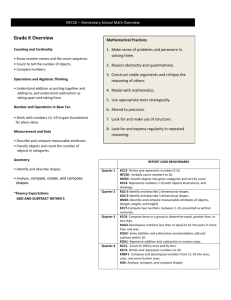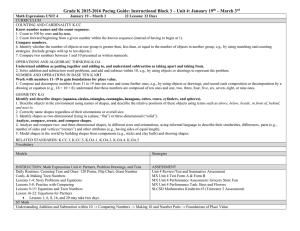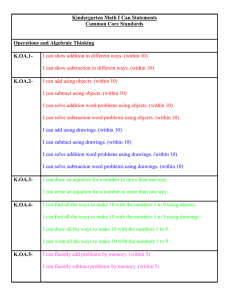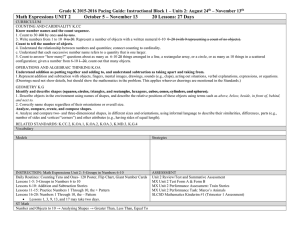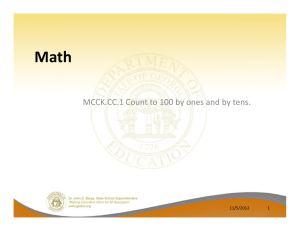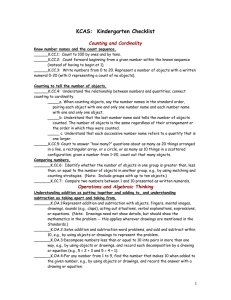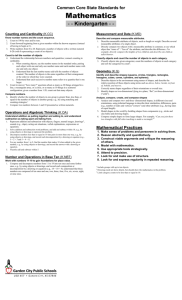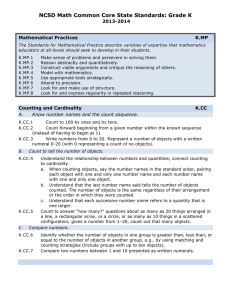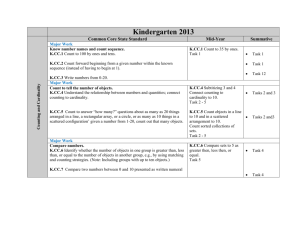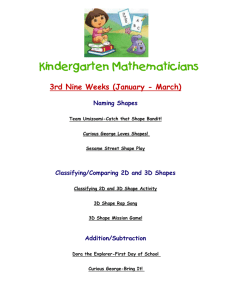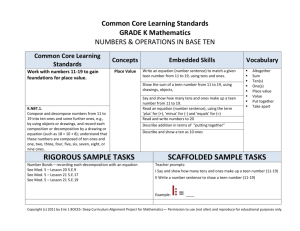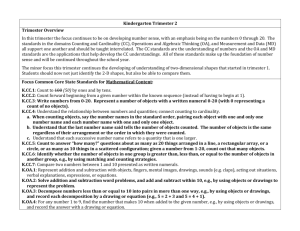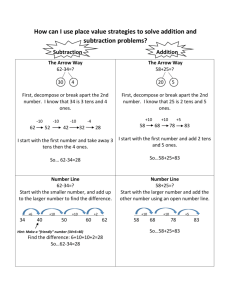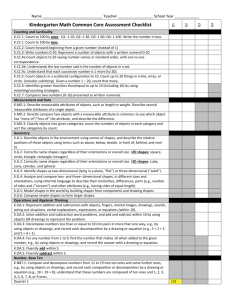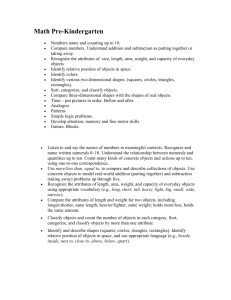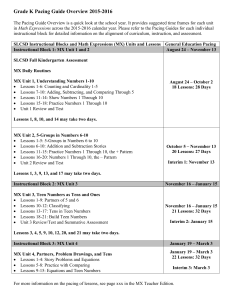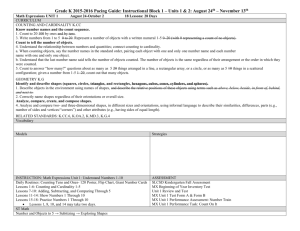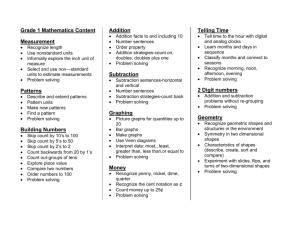Grade K 2015-2016 Pacing Guide: Instructional Block 2 – Unit 3
advertisement
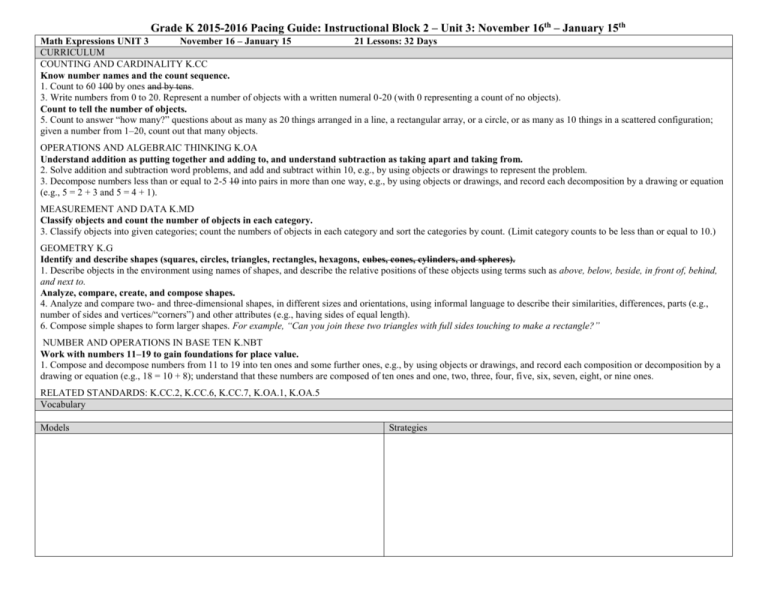
Grade K 2015-2016 Pacing Guide: Instructional Block 2 – Unit 3: November 16th – January 15th Math Expressions UNIT 3 November 16 – January 15 21 Lessons: 32 Days CURRICULUM COUNTING AND CARDINALITY K.CC Know number names and the count sequence. 1. Count to 60 100 by ones and by tens. 3. Write numbers from 0 to 20. Represent a number of objects with a written numeral 0-20 (with 0 representing a count of no objects). Count to tell the number of objects. 5. Count to answer “how many?” questions about as many as 20 things arranged in a line, a rectangular array, or a circle, or as many as 10 things in a scattered configuration; given a number from 1–20, count out that many objects. OPERATIONS AND ALGEBRAIC THINKING K.OA Understand addition as putting together and adding to, and understand subtraction as taking apart and taking from. 2. Solve addition and subtraction word problems, and add and subtract within 10, e.g., by using objects or drawings to represent the problem. 3. Decompose numbers less than or equal to 2-5 10 into pairs in more than one way, e.g., by using objects or drawings, and record each decomposition by a drawing or equation (e.g., 5 = 2 + 3 and 5 = 4 + 1). MEASUREMENT AND DATA K.MD Classify objects and count the number of objects in each category. 3. Classify objects into given categories; count the numbers of objects in each category and sort the categories by count. (Limit category counts to be less than or equal to 10.) GEOMETRY K.G Identify and describe shapes (squares, circles, triangles, rectangles, hexagons, cubes, cones, cylinders, and spheres). 1. Describe objects in the environment using names of shapes, and describe the relative positions of these objects using terms such as above, below, beside, in front of, behind, and next to. Analyze, compare, create, and compose shapes. 4. Analyze and compare two- and three-dimensional shapes, in different sizes and orientations, using informal language to describe their similarities, differences, parts (e.g., number of sides and vertices/“corners”) and other attributes (e.g., having sides of equal length). 6. Compose simple shapes to form larger shapes. For example, “Can you join these two triangles with full sides touching to make a rectangle?” NUMBER AND OPERATIONS IN BASE TEN K.NBT Work with numbers 11–19 to gain foundations for place value. 1. Compose and decompose numbers from 11 to 19 into ten ones and some further ones, e.g., by using objects or drawings, and record each composition or decomposition by a drawing or equation (e.g., 18 = 10 + 8); understand that these numbers are composed of ten ones and one, two, three, four, five, six, seven, eight, or nine ones. RELATED STANDARDS: K.CC.2, K.CC.6, K.CC.7, K.OA.1, K.OA.5 Vocabulary Models Strategies Grade K 2015-2016 Pacing Guide: Instructional Block 2 – Unit 3: November 16th – January 15th INSTRUCTION: Math Expressions Unit 3: Teen Numbers as Tens and Ones ASSESSMENT Daily Routines: Counting Tens and Ones- 120 Poster, Flip Chart, Giant Number Cards Unit 3 Review/Test and Summative Assessment Lessons 1-9: Partners of 5 and 6 MX Unit 3 Test Form A & Form B Lessons 10-12: Classifying MX Unit 3 Performance Assessment: Favorite Places Lessons 13-17: Tens in Teen Numbers MX Unit 3 Performance Task: Sharing Stickers Lessons 18-21: Build Teen Numbers SLCSD Mathematics Kinderim #2 Lessons 3, 4, 5, 9, 10, 12, 20, and 21 may take two days. ST Math Understanding Addition and Subtraction within 5 → Position → Numbers and Objects to 20 → Sorting and Classifying → Introduction to the Number Line
